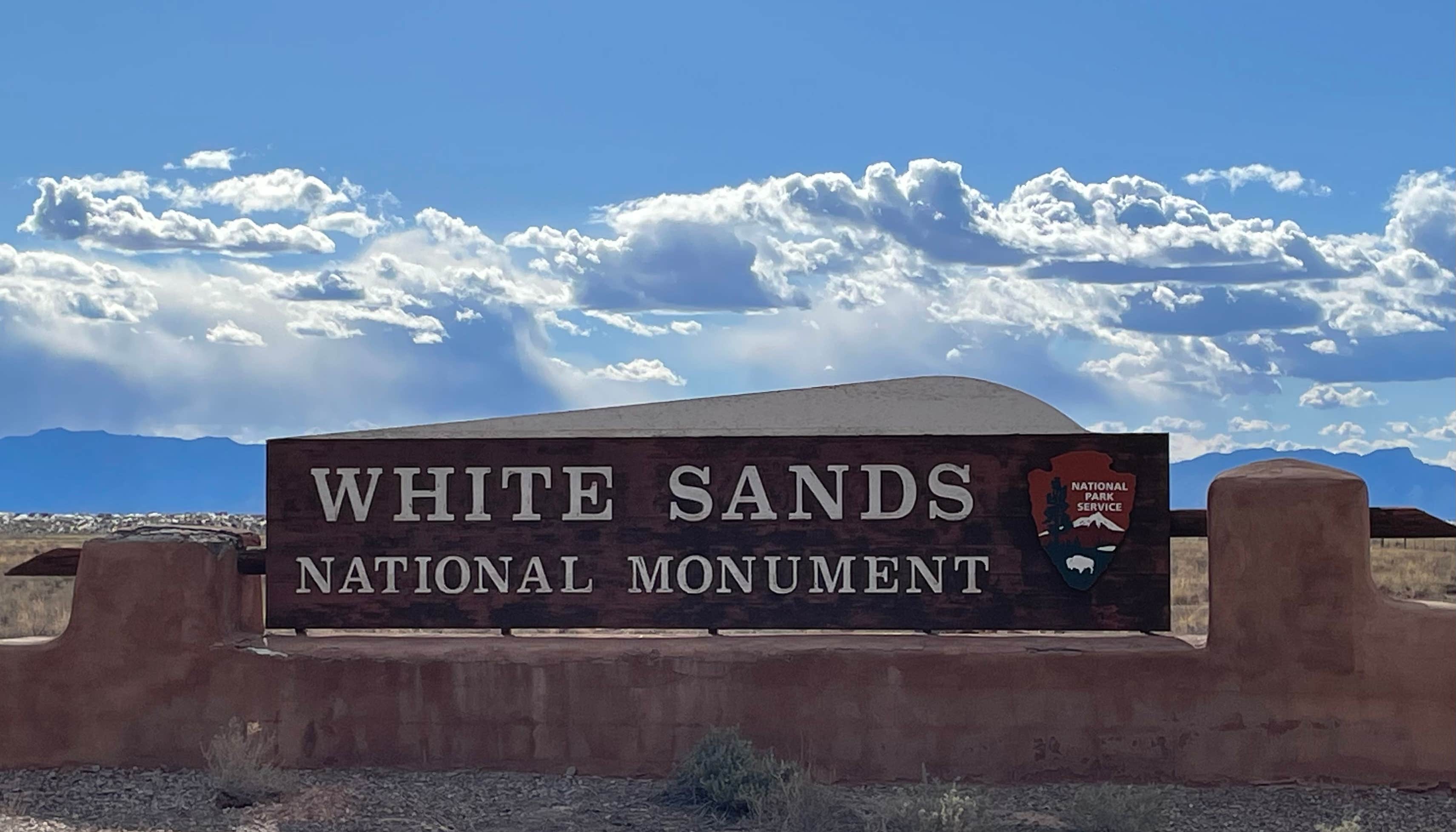White Sands National Park Camping Guide
White Sands National Park became America's newest national park in 2019, protecting 275 square miles of otherworldly white gypsum dunes. Camping at White Sands offers an unforgettable night under brilliant stars and pastel sunsets on the dunes. However, the park has no developed campgrounds -- only primitive backcountry sites reachable by hiking at least a mile into the sand. For 2025, all backcountry camping is temporarily closed for site rehabilitation, meaning no overnight stays are currently allowed inside the park. In the meantime, campers can choose from a range of excellent sites just outside the park, from a scenic state park in the Sacramento Mountains to convenient private RV parks in Alamogordo. This guide covers everything you need to know for planning a White Sands camping trip -- including in-park permit logistics (when available), the best nearby campgrounds, seasonal weather tips, and insider advice from The Dyrt's knowledgable camping community.
White Sands National Park Camping at a Glance
Even when backcountry camping is open, White Sands has no frontcountry car camping or RV sites inside the park. All overnight camping is primitive, hike-in only, with ten designated backcountry sites located along a marked loop trail in the heart of the dunes. These sites require a permit obtained in person on the day of your trip (first-come, first-served at the park entrance). Campers must carry in all water and gear and pack out all waste -- an exciting but challenging way to experience the dunes up close. For 2025, the backcountry camping area remains closed indefinitely (no permits are being issued) as the park rehabilitates the sites and trail.
Fortunately, ample camping options surround White Sands. Just 15-30 minutes outside the park you'll find developed campgrounds with amenities like water, showers, and electric hookups, as well as free dispersed camping near White Sands on public lands. The most popular nearby camping base is Oliver Lee Memorial State Park, nestled in Dog Canyon with tent and RV sites (and even a trail into the mountains). In Alamogordo, private campgrounds like the KOA offer full hookups, pools, and even loaner sleds for the dunes. Whether you prefer roughing it under desert stars or relaxing at a campground with all the comforts, you'll find a spot to suit your style near White Sands.
White Sands National Park Campground Quick Facts
| Quick Facts | Details |
|---|---|
| In-Park Camping | No developed campgrounds; 10 hike-in backcountry sites (primitive camping only) |
| Current Status | Backcountry camping closed (no overnight stays in park as of 2025) |
| Nearby Campgrounds | Multiple options within 15-40 minutes: state park (Oliver Lee), private RV parks (Alamogordo), free BLM dispersed sites |
| Camping Costs | In-park permit $3 per person/night (when available); nearby campgrounds range $0 (dispersed) to ~$40 (full-hookup RV sites) |
| Reservations | In-park permits first-come, day of (no advance booking). Reserve State Park sites on ReserveAmerica; private campgrounds via their websites |
| Camping Season | Year-round camping outside the park. In-park camping (when open) available year-round but best in fall, winter, and spring due to extreme summer heat |
| Typical Climate | Summer: Highs 95-105 F, Lows 60-70 F (afternoon storms Jul-Sep) Winter: Highs 50-60 F, Lows 20-25 F (dry, occasional light snow) |
| 2025 Updates | All backcountry sites closed indefinitely for rehabilitation Safety corridor in effect -- sections of dunes (incl. Alkali Flat trail) remain closed after 2025 incident |
White Sands Campgrounds: Complete Guide
In-Park Backcountry Camping (Primitive Sites)
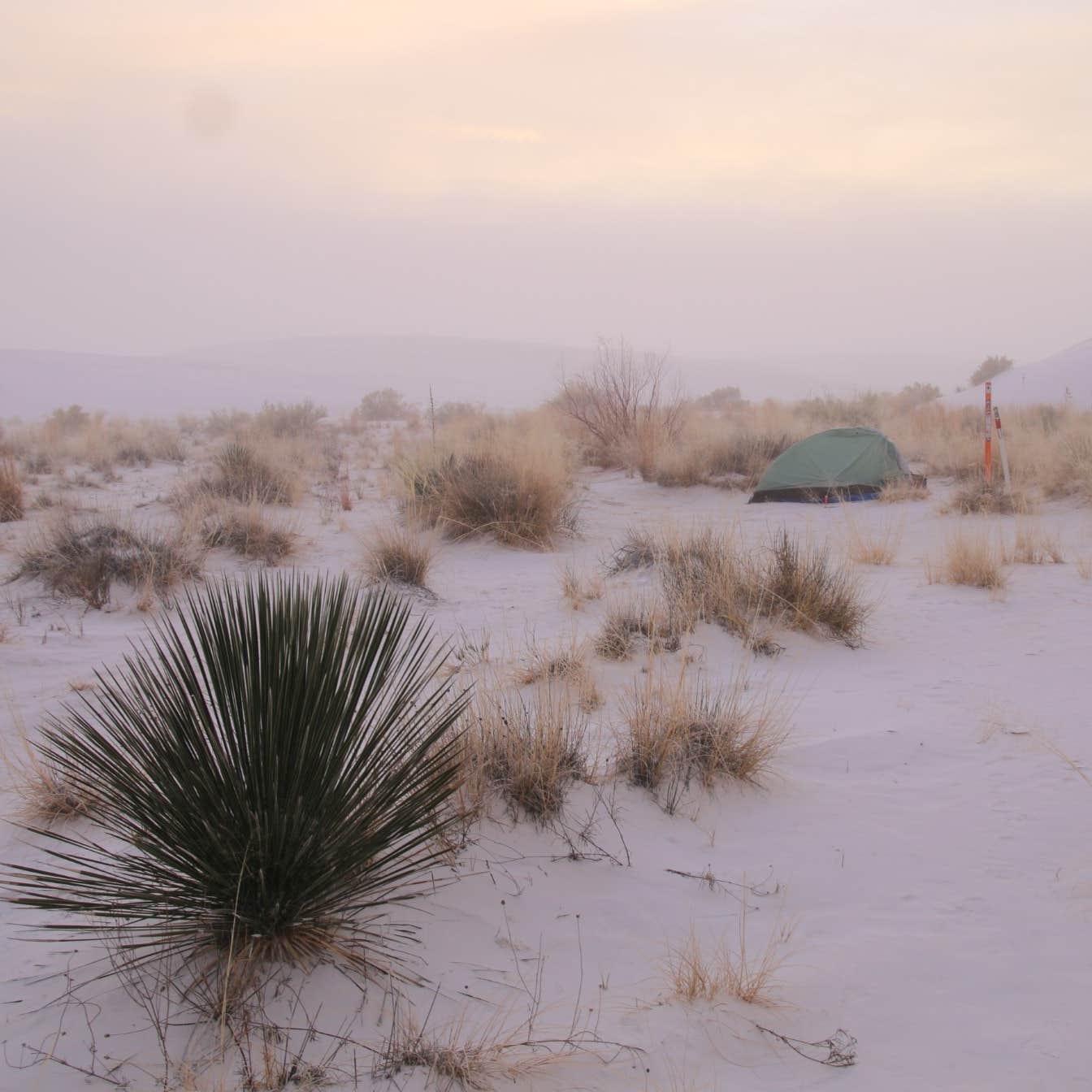
Backcountry Primitive Sites — White Sands National Park
Backcountry Primitive Sites are the only camping option inside White Sands National Park, situated about a mile hike into the heart of the dunes. There are 10 designated sites marked by posts along a loop trail, offering total immersion in the bright gypsum sands and spectacular sunrise/sunset views. These sites are completely primitive -- no shade, no water, no fire rings -- and require packing in all gear. Backcountry camping typically operates on a first-come permit system (picked up at the entrance station). **Note:** Backcountry camping is currently closed for site rehabilitation, with no permits being issued as of 2025.
Campgrounds Near White Sands National Park
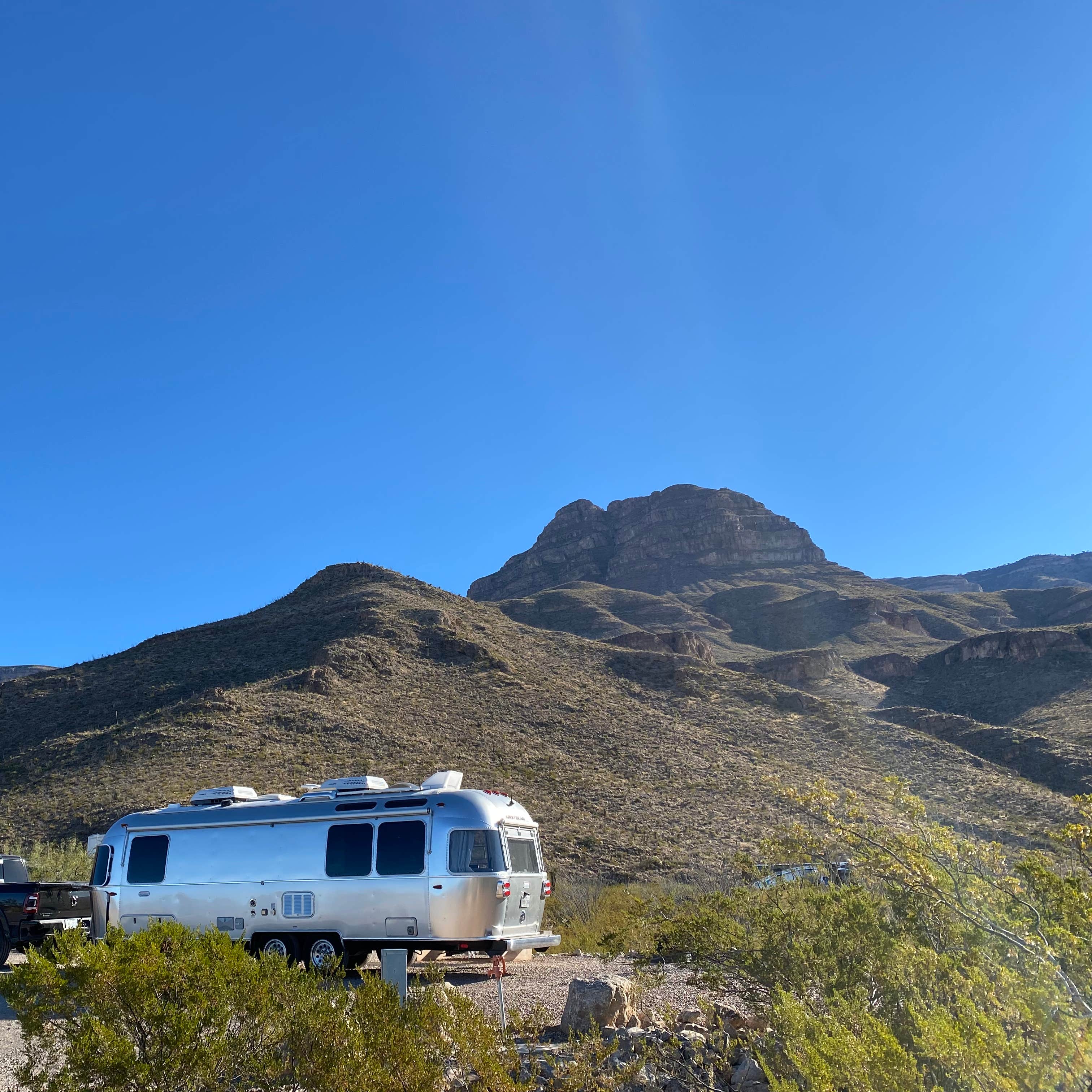
Oliver Lee Memorial State Park Campground
Oliver Lee Memorial State Park Campground sits 25 minutes southeast of White Sands at the mouth of Dog Canyon. This scenic desert campground features around 40 sites (some with water/electric hookups, others primitive tent sites), each with a picnic table and fire ring. Towering canyon cliffs and a historic ranch house provide a dramatic backdrop, and the trailhead for the Dog Canyon hike starts here. Campground amenities include flush restrooms, hot showers, and a visitor center. Many campers praise the quiet atmosphere, starry skies, and beautiful sunrise views over the Tularosa Basin.
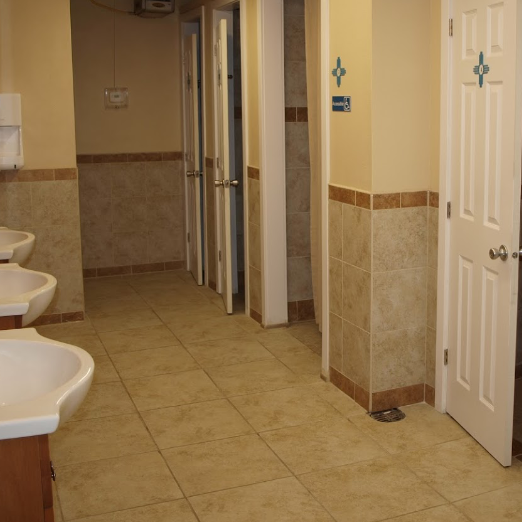
Alamogordo / White Sands KOA
Alamogordo / White Sands KOA is a full-service private campground in the town of Alamogordo, about 15 miles from the dunes. It offers a range of accommodations -- RV sites with full hookups (water, sewer, 30/50-amp electric), grassy tent sites, and a few cabins -- all arranged in a clean, well-kept park. Amenities include a swimming pool, playground, dog park, free Wi-Fi, laundry, and modern bathhouses with hot showers. The friendly KOA staff are known to loan out sand sleds for free. With stores, restaurants, and the New Mexico Space Museum nearby, this campground makes a convenient, family-friendly base camp for White Sands adventures.
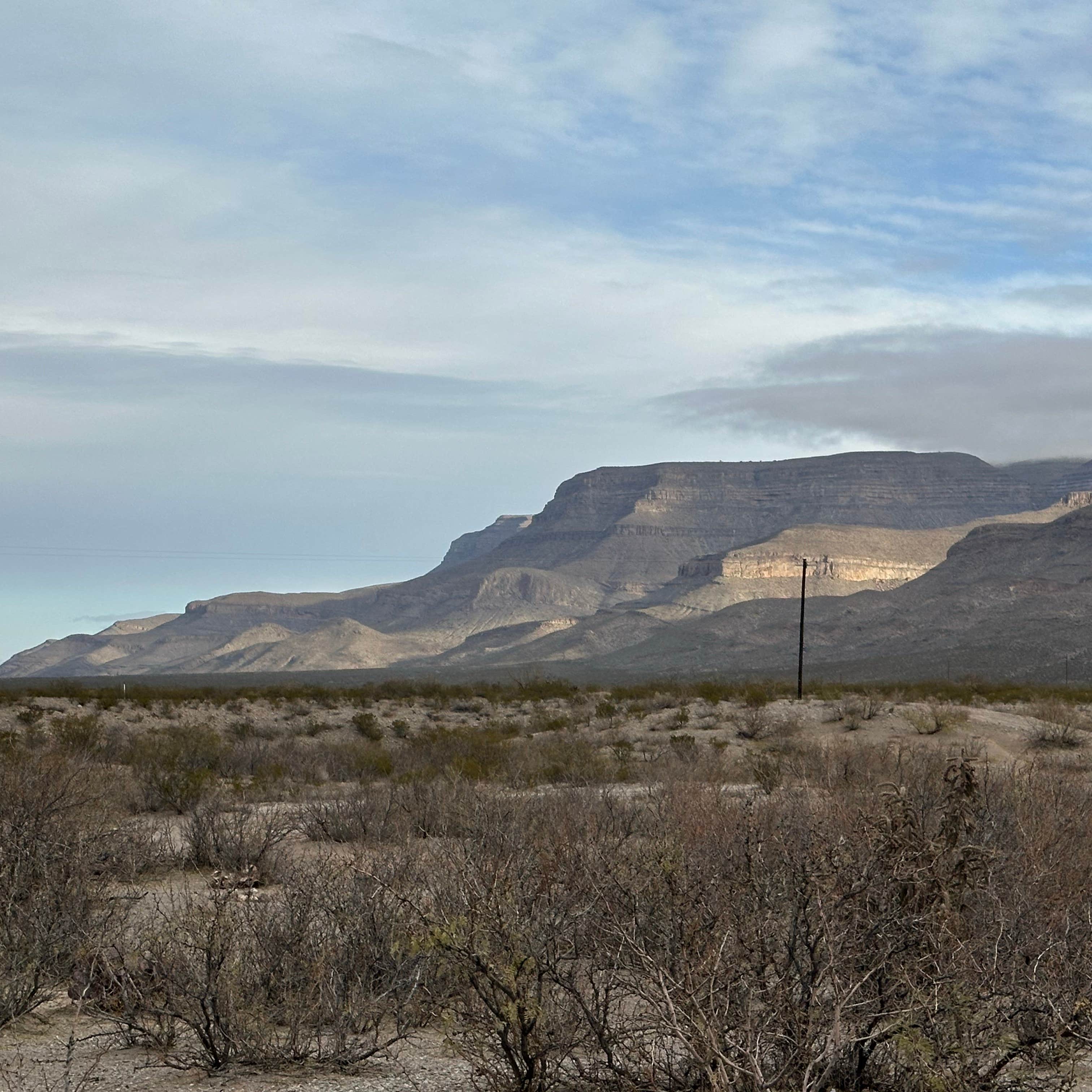
Dog Canyon
Dog Canyon is a dispersed camping area on BLM land near the base of the Sacramento Mountains (about 8 miles south of Alamogordo). Camping here is free and primitive -- there are no marked campsites or facilities -- but campers can choose among numerous flat spots for tents or small RVs with incredible open space and mountain views. Visitors report that Dog Canyon is very quiet and seldom crowded, offering true solitude under the desert sky. Campfires are permitted (bring your own wood and fire pan), and cell service is spotty but present. It's roughly a 30-minute drive from here to White Sands National Park.
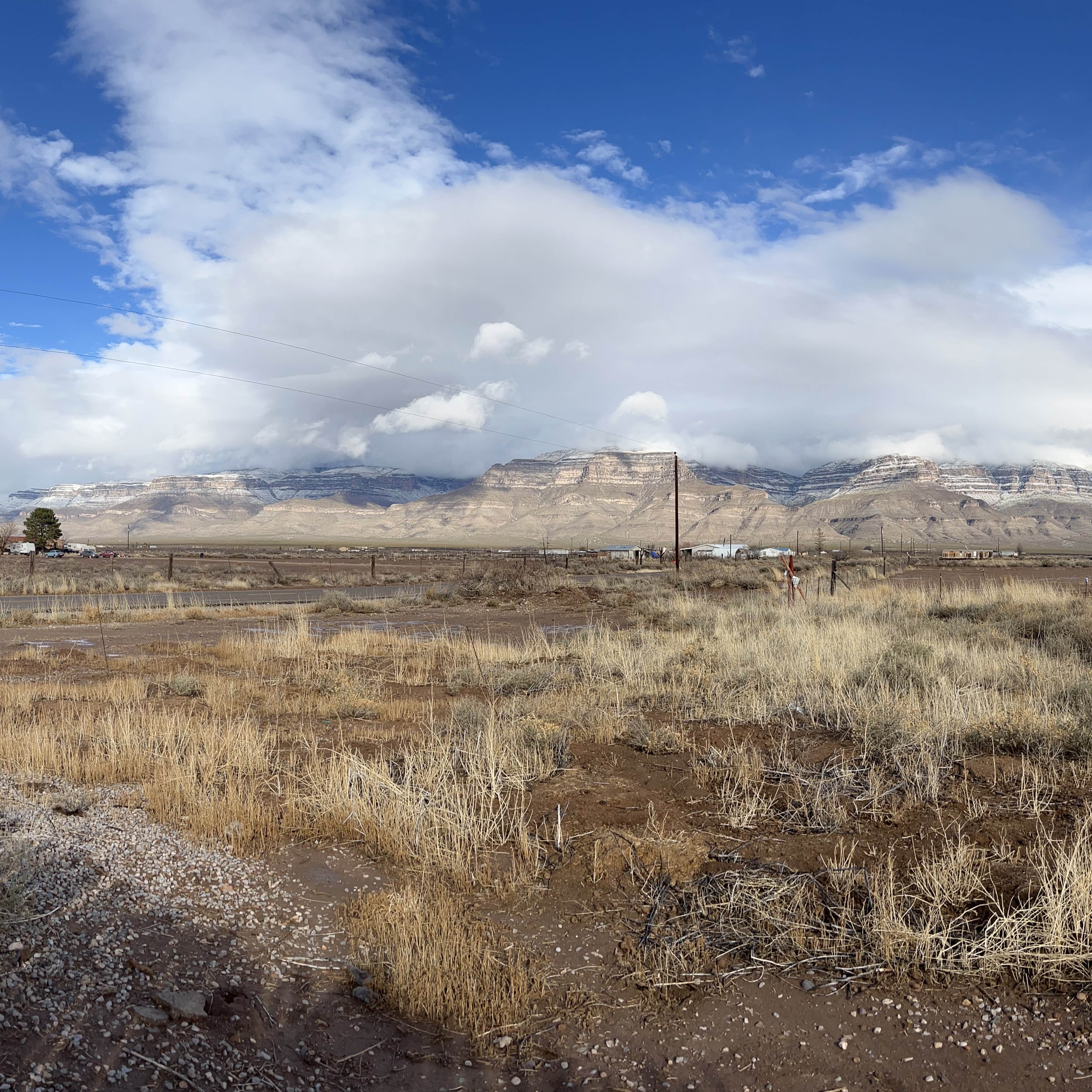
White Sands Culinary Camp
White Sands Culinary Camp is a unique private camping experience located in the foothills near Sunspot, about 15-20 miles from White Sands. This small-scale campground (just a few sites) is hosted by a professional chef, earning its culinary name -- campers can arrange to enjoy gourmet meals prepared on-site. Accommodations range from tent sites to small RV spots (up to 40' rigs), all set on a rustic property with sweeping views of Gobbler Knob and the Sacramento Mountains. The vibe is intimate and family- and pet-friendly. There are no hookups (water is available from a spigot near the host's house and a composting toilet is on-site). Guests love the combination of seclusion, stargazing, and the chance to savor restaurant-quality food after a day on the dunes.
White Sands Campground Comparison Table
| Campground | Location & Sites | Cost & Reservations |
|---|---|---|
| Backcountry Primitive Sites | Inside park dunes (1-mile hike in) 10 sites (primitive) | $3 per person/night Permit day-of only |
| Oliver Lee State Park | Dog Canyon foothills ~44 sites (tent & RV, partial hookups) | $10 (tent) / $14 (electric) ReserveAmerica (recommended) |
| Dog Canyon (dispersed) | BLM desert near park Unlimited dispersed spots | Free No reservation required |
| Alamogordo KOA | In Alamogordo town Tent, RV & cabin sites | $30-$50 per night KOA website/phone |
| Culinary Camp | Private land near mountains Limited tent/RV sites | $25-$35 per night Book via The Dyrt (Hipcamp) |
Campground Amenities and Best Uses
In-Park Backcountry: For those seeking total solitude and dark skies, the backcountry dune sites (when open) provide a one-of-a-kind experience. You'll camp with no one else in sight and enjoy unparalleled stargazing and sunrise/sunset vistas. However, you must be entirely self-sufficient -- these sites have no water or services, require a hike through sand to reach, and can be challenging in extreme weather. Use the backcountry if you're prepared for primitive camping and want a truly immersive night on the dunes.
Public Campgrounds (State/Federal): Campgrounds like Oliver Lee Memorial State Park offer a comfortable base camp with some amenities while still keeping you close to nature. Oliver Lee has tap water, flush toilets, and showers -- a nice refresh after sandy days -- plus a scenic canyon setting and hiking trails (including Dog Canyon Trail right from camp). It's great for campers who want a quiet atmosphere and beautiful scenery but appreciate having picnic shelters, fire rings, and a restroom nearby. National forest campsites up in the mountains (e.g. in Lincoln National Forest) also fall in this category, providing cooler temperatures and shade if you need a break from the desert heat.
Dispersed Camping Spots: If you prefer free camping and maximum privacy -- and you're equipped to camp without facilities -- spots like Dog Canyon and other BLM land pull-outs are ideal. These areas have no fees or reservations and often very few other campers. They work best for self-contained setups (bring your own water, toilet solution, etc.) and those comfortable with dry camping. The reward is open space, sweeping views, campfires under the stars, and zero neighbors. Dispersed camping sites near Tularosa are perfect for vanlifers, boondockers, or anyone on a budget who doesn't mind the lack of amenities.
Private RV Parks: Those traveling in larger RVs or just wanting full amenities and convenience will appreciate private campgrounds in the area. The Alamogordo / White Sands KOA, for example, provides full hookups (so you can run AC during hot afternoons), a swimming pool, Wi-Fi, playgrounds for kids, and even cabin rentals. Boot Hill RV Resort is another excellent option for RV camping near White Sands. Private parks are family-friendly and located right in town -- great for accessing grocery stores, restaurants, and attractions like the Space Museum. They're an excellent choice in summer when having electric for air conditioning and a pool to cool off is a big plus. While you sacrifice some wilderness ambiance, you gain comfort and an easy, reservation-guaranteed stay.
Unique Glamping Experience: For a more upscale or specialized adventure, consider options like White Sands Culinary Camp or other glamping sites near White Sands National Park. These offer a personal touch -- in this case, gourmet meals and a boutique atmosphere -- that can make your trip especially memorable. Glamping sites are best for campers who don't mind paying a bit more for unique amenities (like chef-prepared dinner under the stars) and a smaller, more social setting. They still require you to bring camping essentials (and are typically off-grid), but provide an elevated experience compared to standard campgrounds. If you're celebrating a special occasion or just love good food, the Culinary Camp and similar sites are a delightful way to camp near White Sands.
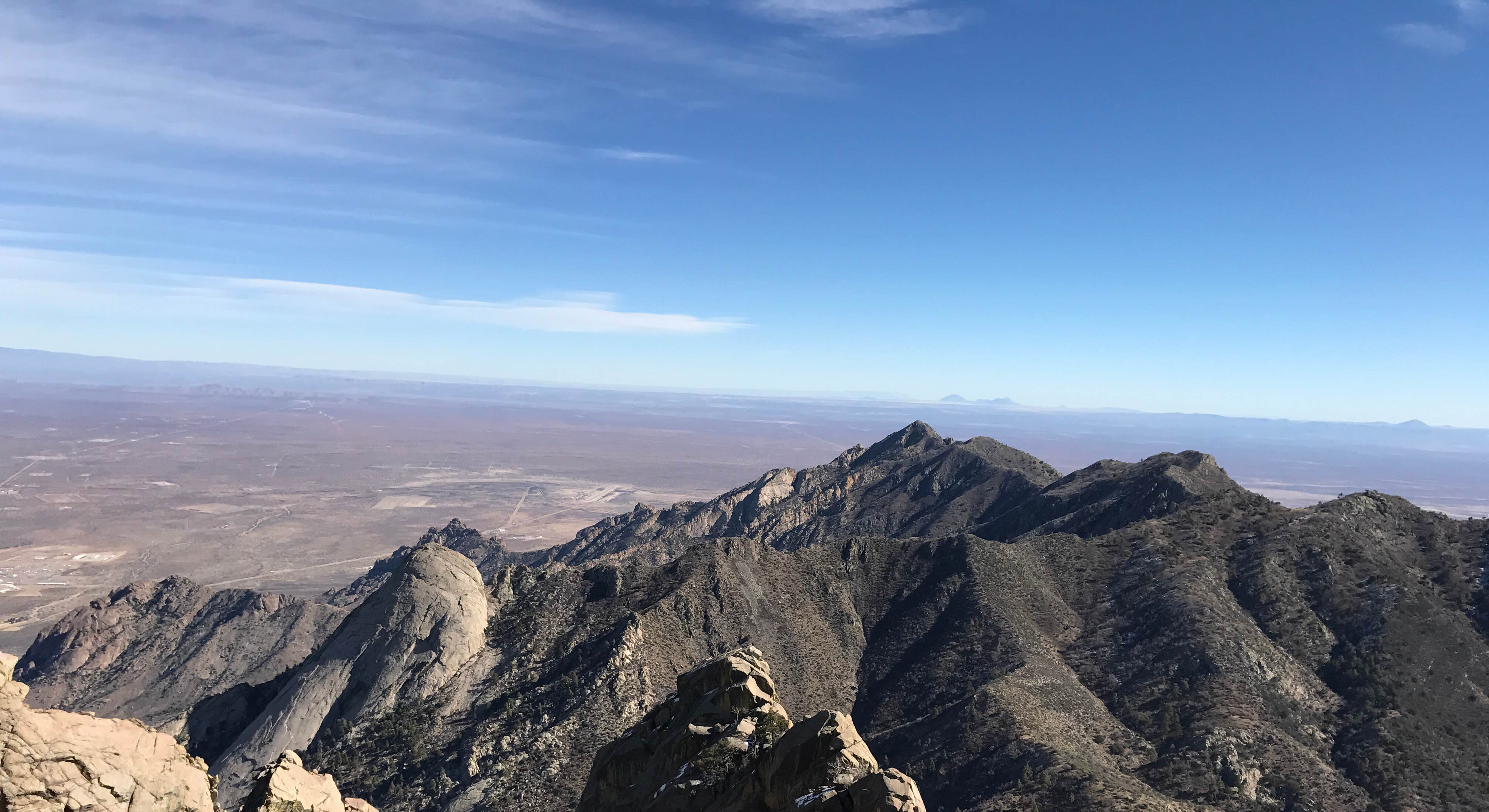 Photo by Matthew Y
Photo by Matthew Y
Planning Your White Sands Camping Trip 
When to Visit White Sands
White Sands is open year-round, but desert conditions vary dramatically by season. In general, fall and early spring offer the most pleasant camping weather with mild days and cool nights. Summer brings extreme heat and thunderstorms, while spring is notorious for high winds that can whip sand through the air (creating white-out conditions). Here's what to expect each season:
| Season | Temperatures | Camping Conditions |
|---|---|---|
| Spring (March-May) | Day: ~75 F (24 C) Night: ~40 F (4 C) | Very windy afternoons (gusts 30-50 mph) common Blowing sand can reduce visibility and bury gear Comfortable temperatures for camping when winds are calm |
| Summer (June-August) | Day: 90-100+ F (32-38 C) Night: 60-70 F (16-21 C) | Extreme heat and sun exposure midday (dune surface > 100 F) Frequent late-day thunderstorms July-Sept (brief road closures possible) Camp only if well-prepared for heat; favor sites with shade or electrical hookups |
| Fall (September-November) | Day: 80 F down to 60 F Night: 40 F down to 30 F | Generally dry, sunny, and calm -- ideal weather Peak visitation in early fall (especially weekends) Backcountry camping (if open) most enjoyable this time of year |
| Winter (December-February) | Day: 50-60 F (10-16 C) Night: 20-25 F (-6 to -4 C) | Cold nights require proper gear, but days are mild and often clear Lowest visitor numbers -- solitude on dunes Occasional light snow or freezing rain can occur |
Spring (Mar-May):
Spring in White Sands sees comfortable temperatures but is known for its wind. March and April especially bring strong winds that can kick up gypsum sand into blinding clouds. Campers in spring should be prepared to secure tents extra well (wind storms can flatten poorly staked tents) and possibly pause outdoor activities during the worst afternoon gusts. On the plus side, daytime temps in the 70s F are great for hiking if the wind cooperates, and wildflowers bloom in the desert around April. By May, winds start to ease and evenings become very pleasant for campfires. Just plan for potential no tent cooking or no open tent flaps during high winds to keep sand out of everything.
Summer (June-August):
Summer is hot and busy at White Sands. Daytime highs routinely exceed 95 F, and the sun reflecting off white sand can feel relentless. Monsoon season arrives in July-August, bringing dramatic late-day thunderstorms and brief heavy rains (the park may temporarily close Dunes Drive if lightning is present or water pools on the road). Camping inside the park in summer (if it were allowed) is challenging -- there's no natural shade and overnight lows still hover around 65-70 F, providing little relief. Most nearby campgrounds remain open (Oliver Lee and private RV parks), but many travelers opt for sites with electric hookups to run AC or escape to higher elevations midday. If you do camp in summer, adopt a siesta schedule: explore dunes at sunrise, relax in shade or visit Alamogordo's indoor attractions in the afternoon, then head back out around sunset when temperatures become more tolerable.
Fall (September-November):
Fall is often considered the best time to camp at White Sands. September still feels like summer early in the month (upper 80s F), but by October, days dip into the 70s F with crisp nights in the 40s F -- fantastic tent camping near Holloman Air Force Base weather. The summer monsoon rains taper off, and the notorious winds of spring haven't yet arrived, yielding mostly calm, clear days. Autumn light on the dunes is spectacular, and you'll find plenty of space to yourself on weekdays. Visitation is moderate to high in September (especially around Labor Day and Balloon Fiesta week), then quieter by mid-October and November. All campgrounds (park and surrounding areas) generally remain open through the fall. Just bring layers -- late fall nights can approach freezing, and you'll appreciate a warm sleeping bag once the sun goes down.
Winter (Dec-Feb):
Winter is a peaceful time at White Sands, with cold nights and tranquil days. Highs in the 50s F mean it's comfortable to hike the dunes during the day with a jacket, and the white sands may even get a light dusting of snow a few times a season, creating a magical scene. Overnight, temperatures commonly drop into the 20s F, so campers need four-season gear (and expect a frosty tent in the morning). The park's backcountry camping is often closed for the season (and is closed indefinitely as of 2025), but Oliver Lee State Park and local RV parks remain open year-round. Some amenities at state parks might be limited in winter (e.g. water spigots could be turned off on freezing nights), so check ahead. On the bright side, you'll have extremely clear skies for stargazing -- and almost total solitude. Winter camping here can be rewarding if you come prepared for the cold and short daylight hours (sunset by ~5pm in December).
White Sands Reservation Systems Explained
Securing a campsite for your White Sands trip depends on where you plan to stay, as different systems apply to in-park versus outside campgrounds:
In-Park Backcountry Permits (NPS): When backcountry camping is available, no online reservation is possible -- you must obtain a permit in person on the day of your stay. Permits are issued at the White Sands entrance station starting at 7:00 AM, and they're first-come, first-served. There are only 10 backcountry sites, so on weekends and holidays they can all be claimed early in the day. Each permit covers one site for up to 6 people and one night (you must exit by 1 PM the next day). You cannot reserve these sites in advance or for multiple nights in a row. Tip: Arrive at the entrance right at opening if you hope to snag a permit during popular times like spring break. (As of 2025, backcountry permits are not being issued due to the closure.)
Reservations for Nearby Campgrounds: Developed campgrounds around White Sands use traditional reservation systems:
- Oliver Lee Memorial State Park -- Sites can be reserved through New Mexico State Parks' online system (ReserveAmerica). The booking window is usually 6 months out. A handful of sites may be held for first-come, first-served campers each day, but booking ahead is wise in peak seasons. If sites are full online, you can sometimes nab a no-show spot by arriving early in the morning.
- Private RV Parks and Campgrounds -- Places like the KOA, Boot Hill RV Resort, etc., have their own reservation websites and phone lines. It's recommended to call or book online in advance, especially for weekends or if you need a specific type of site (e.g. a long pull-through for a big rig). These campgrounds generally have more availability in winter and more demand in summer.
- Dispersed Camping -- No reservations or permits are required for BLM or national forest dispersed camping near White Sands. These are first-come and typically have plenty of space. Just be sure to follow Leave No Trace guidelines and any posted rules on maximum stay (usually 14 days on public lands).
If you're visiting during major holidays (e.g. Memorial Day, 4th of July) or events, plan ahead. The area can get an influx of campers, and even hotels in Alamogordo fill up. Have a backup camping option in mind in case your first choice is unavailable. Fortunately, with so much public land around, you'll rarely be completely without a place to camp -- it might just be more rustic than planned!
Campground Costs and Budgeting
| Campground Type | Nightly Cost | Key Features |
|---|---|---|
| Backcountry (In-Park) | $3 per adult ($1.50 per child) | One-time permit fee per night; covers up to 6 people. No other fees. Extremely basic camping, no facilities. |
| State Park Campground | $10 (primitive) $14 (electric hookup) | Per site, per night at Oliver Lee SP. Includes access to water, bathrooms, showers. Modest fee for developed amenities -- a great value. |
| Private Campgrounds | $25-$50 | Typical range for nearby private RV parks or campgrounds (varies by site type). Often full hookups and extra facilities like pools, WiFi. |
| Dispersed Camping | Free | No charge on BLM/National Forest land. No services provided -- you'll need your own water, power, and waste management. |
| Glamping Sites | $25-$100 | Specialty stays (e.g. culinary camp, cabin rentals). Higher cost reflects unique amenities (meals, furnished tent, etc.) and limited capacity. |
Additional Costs and Budget Tips
Park and Entry Fees: White Sands NP charges $25 per vehicle for a 7-day entry pass (motorcycles $20, individuals on foot/bike $15). If you're visiting other national parks on your trip, the $80 America the Beautiful Annual Pass covers your entry. There is no separate fee for backcountry camping permits beyond the per-person camping cost -- but you still must pay the park entrance fee upon arrival.
Sled Rentals/Purchases: A favorite activity here is sledding down the dunes. The White Sands gift shop sells plastic sand sleds for about $20 each, and they will buy back your used sled for a few dollars. You can also bring your own sled or sandboard. To go faster, buy a small block of wax ($2-$3) at the gift shop to wax the bottom of the sled. Many private campgrounds (like the KOA) have loaner sleds available for guests -- a nice way to save a bit of money.
Firewood and Supplies: If you plan to have campfires (allowed at Oliver Lee SP fire rings and dispersed sites -- not allowed on the dunes), budget around $7-$10 per bundle of firewood from local stores in Alamogordo. Collecting firewood in the desert is prohibited (and there's very little dead wood anyway), so bring or buy what you need. Similarly, pack in all water you'll need for dispersed camping -- the White Sands visitor center has a water fill station where you can top off jugs for free during business hours. Ice can be purchased in Alamogordo (expect ~$3 per bag). Stocking up in town is often cheaper than relying on small campground stores.
Local Discounts: New Mexico residents get discounted camping fees at state parks, and seniors and veterans may also qualify for reduced rates or fee waivers on certain days -- check the NM State Parks website for details. If you're on a tight budget, dispersed camping will always be the cheapest option, but even the developed campgrounds here are affordable compared to many national parks. Finally, consider visiting in the off-season (winter) -- not only will you encounter fewer people, some private campgrounds offer lower off-season rates or weekly discounts for longer stays during the quieter months.
Essential Gear for White Sands Camping
Camping in the desert at White Sands requires balancing for extreme sun, heat, and occasional cold, plus dealing with the unique challenges of fine gypsum sand. Beyond your standard camping kit, be sure to pack the following:
Sun & Heat Protection:
- Sunblock, Hat, and Sunglasses: The sun's reflection off white sand is intense. High-SPF sunscreen (and lip balm), a wide-brimmed hat, and UV-blocking sunglasses are must-haves to avoid burns and snow-blindness on the dunes.
- Long Layers for Sun: Lightweight, long-sleeve shirts and long pants will protect your skin better than shorts and tank tops. Many hikers wear breathable sun hoodies or even carry an umbrella for shade when walking on open dunes.
- Ample Water Supply: Plan for at least 1 gallon (4 L) of water per person per day in the warm months -- more if doing strenuous hikes. There is water at the visitor center, but none out in the dunes or at dispersed sites. A hydration backpack or multiple durable water jugs are recommended. Electrolyte drink mixes or tablets can help replenish what you'll sweat out.
Camp Setup & Shelter:
- Sand Stakes or Anchors: Standard tent stakes won't hold in powdery sand. Bring sand-specific stakes (wide, screw-like stakes) or be ready to bury weights (like stuff sacks filled with sand) to anchor your tent, canopy, or rainfly. This is critical if camping on the dunes or any sandy ground.
- Sturdy Tent & Groundsheet: Use a tent that can withstand high winds -- low profile is better than tall. A footprint or tarp under your tent will add a layer between your gear and the gypsum sand (which can be abrasive). Zip your tent closed whenever you're away to keep blowing sand out of your sleeping area.
- Warm Sleeping Gear: Desert temperatures swing dramatically. Even in summer, a light 30 F-rated sleeping bag or blanket is smart (nights can drop into the 60s or lower, which feels chilly after a 100 F day). In late fall through spring, bring a true cold-weather sleeping bag (0-20 F rating) and an insulated sleeping pad -- the sand can get surprisingly cold at night. Always err on the side of a warmer bag; you can unzip if too warm.
- Cooler & Food Storage: A high-quality cooler is important if you're camping in the heat -- block ice tends to last longer than cubes in the desert. Keep your cooler in your shaded vehicle or cover it during the day. There are no bears to worry about here, but ravens, rodents, and foxes will investigate food. Use hard-sided containers or a vehicle to secure food overnight, especially at developed campgrounds.
Navigation & Safety:
- Navigation Tools: It is very easy to get disoriented among dunes that look alike. Carry a compass and a topo map or GPS device whenever you venture beyond the parking areas -- and know how to use them. For backcountry campers, GPS signals can be unreliable in the dunefield, so do not rely solely on your phone. Pay attention to trail markers (colored posts) and consider using a simple oriented compass bearing to navigate back to your camp or car. Some campers tie brightly colored ribbons to tall tent poles or on dunes near camp as a visual locator.
- Headlamp/Flashlight: If you'll be out for sunset or stargazing, bring a reliable headlamp (and spare batteries). Night falls quickly in the desert. A red-light mode is helpful to preserve night vision if stargazing. Also, having a light makes you visible to any drivers on Dunes Drive if you're walking back after dark.
- Dust/Sand Protection: When winds pick up, sand will get everywhere. A bandana or buff can be worn over your face to avoid inhaling sand, and goggles can protect your eyes if you're caught in a sandstorm. It's wise to keep sensitive electronics (cameras, phones) in zip-top bags when not in use, and brush off any sand from zippers on your tent or backpacks to prolong their life.
- First Aid and Miscellaneous: Carry a basic first aid kit. Include tweezers (for removing cactus spines or yucca splinters) and eye drops to rinse out any blown sand. In summer, watch for signs of heat exhaustion -- pack salty snacks and plan to be active in cooler parts of the day. Additionally, don't forget items like a broad ground tarp or old sheet to create a sand-free sitting area at camp, a camp chair (sitting directly on hot sand can be uncomfortable), and perhaps a small shovel -- useful for digging out stuck tent stakes, burying campfire ashes, or leveling a spot for your tent in soft sand.
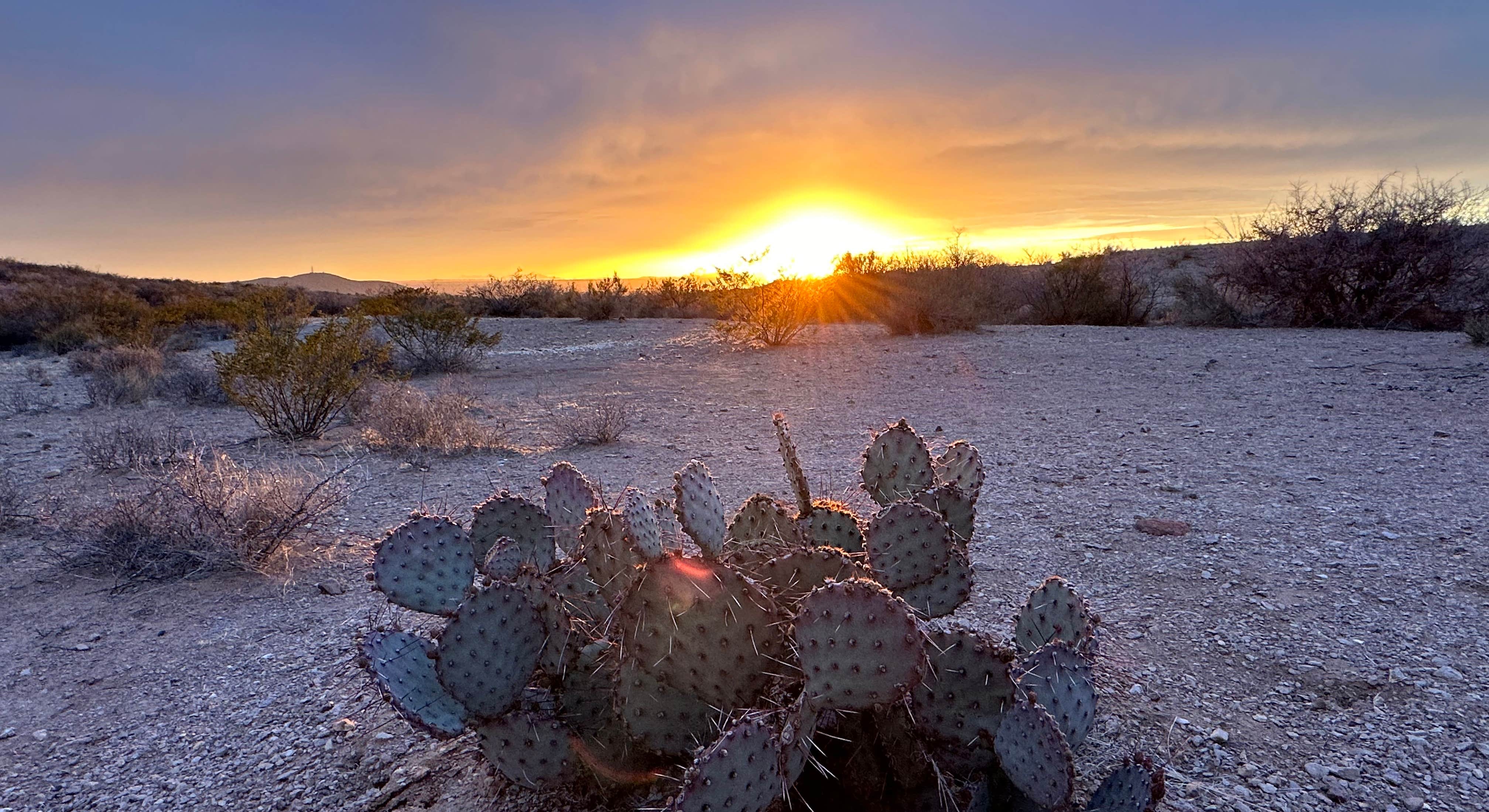 Photo by Melissa S
Photo by Melissa S
Wildlife Safety and Park Regulations 
Wildlife Safety in White Sands
While White Sands doesn't have the large predators found in some national parks, the desert ecosystem still requires awareness and proper practices:
Desert Wildlife:
The dunes and surrounding desert are home to various species that have adapted to this harsh environment. Kit foxes, nocturnal desert residents, may approach campsites at night looking for food scraps. Coyotes also roam the area but typically avoid humans. Ravens are persistent scavengers that will investigate any unattended food or trash. Several snake species live here, including the harmless coachwhip and the venomous western diamondback rattlesnake (rare in the open dunes but present in surrounding areas). Always check where you're stepping or placing hands, especially around rocks and vegetation.
Food Storage Requirements:
While bears aren't a concern at White Sands, proper food storage is still essential. Ravens and rodents will tear through soft bags and coolers left unattended. Store all food in hard-sided containers or locked vehicles when not actively in use. At dispersed camping sites, never leave food out overnight -- kit foxes and coyotes may investigate. Clean up immediately after meals and pack out all food waste.
Safety Guidelines:
- Watch where you step -- rattlesnakes blend in with the desert floor
- Shake out shoes, sleeping bags and clothing before putting them on -- scorpions and spiders may seek shelter in dark places
- Never attempt to handle or approach any wildlife
- If you encounter a snake, freeze and slowly back away
- Keep campsites clean to avoid attracting animals
- Use a flashlight at night -- many desert creatures are nocturnal
Park Regulations and Etiquette
| Regulation Category | Specific Rules | Penalties |
|---|---|---|
| Campfires | Prohibited in park and on dunes Allowed only at designated sites outside park Must be completely extinguished | Federal citations Fines starting at $150 |
| Dune Protection | Stay on designated trails when marked Do not remove gypsum sand No motorized vehicles on dunes | Resource damage citations Fines and possible ban |
| Wildlife | No feeding any animals Maintain safe distances Do not disturb or collect | Wildlife harassment fines Federal penalties |
Additional Park Regulations
Leave No Trace: Pack out all trash, including organic waste like fruit peels. The gypsum environment breaks down waste very slowly. Human waste must be packed out from backcountry sites (when open) -- there are no toilets on the dunes. At dispersed sites outside the park, bury human waste at least 6 inches deep and 200 feet from water sources.
Collection Prohibited: Taking gypsum sand, plants, animals, or artifacts from the park is illegal. This includes small amounts of sand as souvenirs. The delicate desert ecosystem depends on every element remaining in place.
Sledding Safety: Sledding is permitted on dunes without vegetation. Never sled toward people, and always check your landing area. Walk to the side of sledding runs, not in the middle where sleds travel.
Missile Range Closures: White Sands National Park is surrounded by an active missile testing range. Highway 70 and the park may close without warning for tests, typically lasting 1-3 hours. Check the closure hotline (575-678-1178) or park website before visiting.
Beyond the Campground: Activities and Exploration 
Day Trips from White Sands Campgrounds
White Sands National Park is the main attraction, but the surrounding region offers plenty to explore on your trip. Whether you're looking for a rewarding day hike, cultural sites, or a change of scenery, consider these nearby destinations and activities:
Oliver Lee Memorial State Park & Dog Canyon:
If you're camping at Oliver Lee SP (or even if not), be sure to tackle the Dog Canyon Trail. This 5.5-mile round-trip hike starts near the campground and climbs toward the high country, offering sweeping views of the Tularosa Basin as it gains elevation. It's a steep and challenging trail (especially the first mile), but even a shorter hike up the canyon is beautiful -- you'll see greenery and a spring-fed creek that feels worlds apart from the dunes. The state park also features a historic ranch house; check if tours are available at the visitor center. In the evenings, Rangers sometimes host night sky programs or guided walks in Dog Canyon, which can be a complement to a day at White Sands.
Lincoln National Forest (Cloudcroft):
A 45-minute drive east of White Sands takes you up into the Lincoln National Forest and the town of Cloudcroft (elevation ~8,600 feet). Here, alpine forests of pine and aspen provide a cool retreat from the desert heat. Popular activities include hiking trails to scenic overlooks (try the Osha Trail, an easy 2.5-mile loop through fir and pine forests with views back toward the basin) and visiting the Cloudcroft observation deck where you can see the white sand dunes from high above. In winter, Cloudcroft even offers snowplay and small ski areas. This is a perfect day trip to give your legs a break from sand trekking -- have a picnic among the trees or enjoy a slice of pie at a Cloudcroft cafe before heading back down to camp. For those interested in cabin camping near Weed, this mountain area offers several cozy options.
NM Museum of Space History (Alamogordo):
Located in Alamogordo, just 15 minutes from the park, the New Mexico Museum of Space History is a fun stop for families and space enthusiasts. The museum features interactive exhibits on rocketry, the space race, and planetary science, and it's home to the International Space Hall of Fame. Outside the museum, you'll see rockets, missiles, and even the Apollo program's Little Joe II booster on display. There's also a planetarium for star shows. This museum can be a midday activity when the dunes are too hot -- spend a few hours in the cool A/C learning about space, then head back to White Sands in the late afternoon for more dune adventures.
Organ Mountains-Desert Peaks National Monument:
On the west side of the Tularosa Basin near Las Cruces (about a 1-hour drive from White Sands) rise the dramatic Organ Mountains. This national monument offers excellent hiking and photography. A favorite outing is to drive to the Aguirre Spring Recreation Area, which has a campground and trailheads for the Baylor Pass Trail and Pine Tree Loop. The Pine Tree Loop Trail (4 miles round-trip) is a moderate hike that winds up into juniper woodlands with views of the jagged Organ Needle peaks. Even a short walk from the Aguirre Spring picnic area provides panoramic vistas of the basin and dunes far in the distance. Note: Aguirre Spring is day-use only for non-campers (gates typically close at 7 PM), and there is a small BLM entry fee per vehicle. Consider exploring camping options near Organ if you want to stay closer to this spectacular area.
Three Rivers Petroglyph Site:
About 45 miles north of White Sands (a roughly 1-hour drive) lies the Three Rivers Petroglyph Site, a hidden gem for history buffs. This archaeological site protects over 21,000 ancient petroglyphs etched into basalt boulders scattered on a hillside. A short 1-mile trail leads you through a dense concentration of these images -- you'll spot everything from animals and birds to geometric patterns created by Jornada Mogollon people over 600 years ago. It's like an outdoor art gallery in the desert. The site has a small campground and picnic area as well. Visiting in the cooler morning is best, both to beat the heat and to catch low-angle sunlight that makes the petroglyphs easier to see. Don't forget water and a hat; even though it's a brief hike, there's no shade and it can get hot out on the rocks.
Top Hiking Trails Near Campgrounds
While much of the dune field is open to cross-country exploration, White Sands has five marked trails that offer a range of difficulty and scenery. From an easy boardwalk stroll to a backcountry trek, here are the park's notable trails:
| Trail Name | Difficulty & Distance | Key Features |
|---|---|---|
| Interdune Boardwalk | Easy (ADA accessible) 0.4 mile round-trip | Elevated boardwalk through fragile interdune habitat. Exhibits along the way explain dune ecology. Ends at a shaded platform with views of the dunefield and San Andres Mountains. Perfect for all ages and abilities. |
| Playa Trail | Easy 0.5 mile round-trip | Flat walk to a shallow depression (playa) that sometimes fills with water. Look for crusts of gypsum crystals on the ground. Interpretive signs describe desert water and wildlife. Quick, family-friendly hike. |
| Dune Life Nature Trail | Moderate 1 mile loop | Signed by "orange spade" markers. Features some steep dune climbs and descents. Interpretive displays (with cartoon Kit Fox "guides") highlight animals of the dunes. Offers close-up looks at dune grasses and yucca. Nice views of White Sands Missile Range and mountains. |
| Alkali Flat Trail | Strenuous 5 miles loop | The longest and most challenging trail -- marked by tall red posts across open dunes. Not actually flat: involves many up-and-down dune crossings. Leads to the edge of Alkali Flat, an ancient lakebed. No shade at all; carry plenty of water. Incredible 360 degree vistas of wave-like dunes, but requires endurance. |
| Backcountry Camping Trail | Moderate 2 miles round-trip (loop) | Marked by blue posts (when open). This loop takes you past all ten backcountry campsites in a figure-8 path. Steep dunes in sections but relatively short. Often used by backpackers heading to camp, but day hikers can enjoy it too for a taste of deeper dunes. Especially beautiful at sunset -- just bring a headlamp for return. |
Water Activities in White Sands
While White Sands National Park itself is a sea of sand rather than water, the surrounding region offers some water-based recreation:
Lake Holloman:
Located on Holloman Air Force Base (about 10 miles west of Alamogordo), this small reservoir offers fishing and boating when water levels permit. Access is restricted to military personnel and their guests, but the Holloman AFB FamCamp provides camping for eligible visitors. The lake stocks rainbow trout in winter months.
Bonito Lake:
High in the Sacramento Mountains near the town of Ruidoso (about 1.5 hours from White Sands), Bonito Lake offers fishing and non-motorized boating at 7,400 feet elevation. The cool mountain setting provides relief from desert heat. Note that this is a water supply reservoir with restricted access -- check current regulations before visiting.
Desert Springs:
Several natural springs exist in the mountains surrounding White Sands, though most require hiking to reach. Dog Canyon in Oliver Lee State Park has a year-round spring creating a green oasis. La Luz Trail near Alamogordo follows La Luz Creek part way up the mountain. These aren't swimming holes but provide rare desert water features worth exploring.
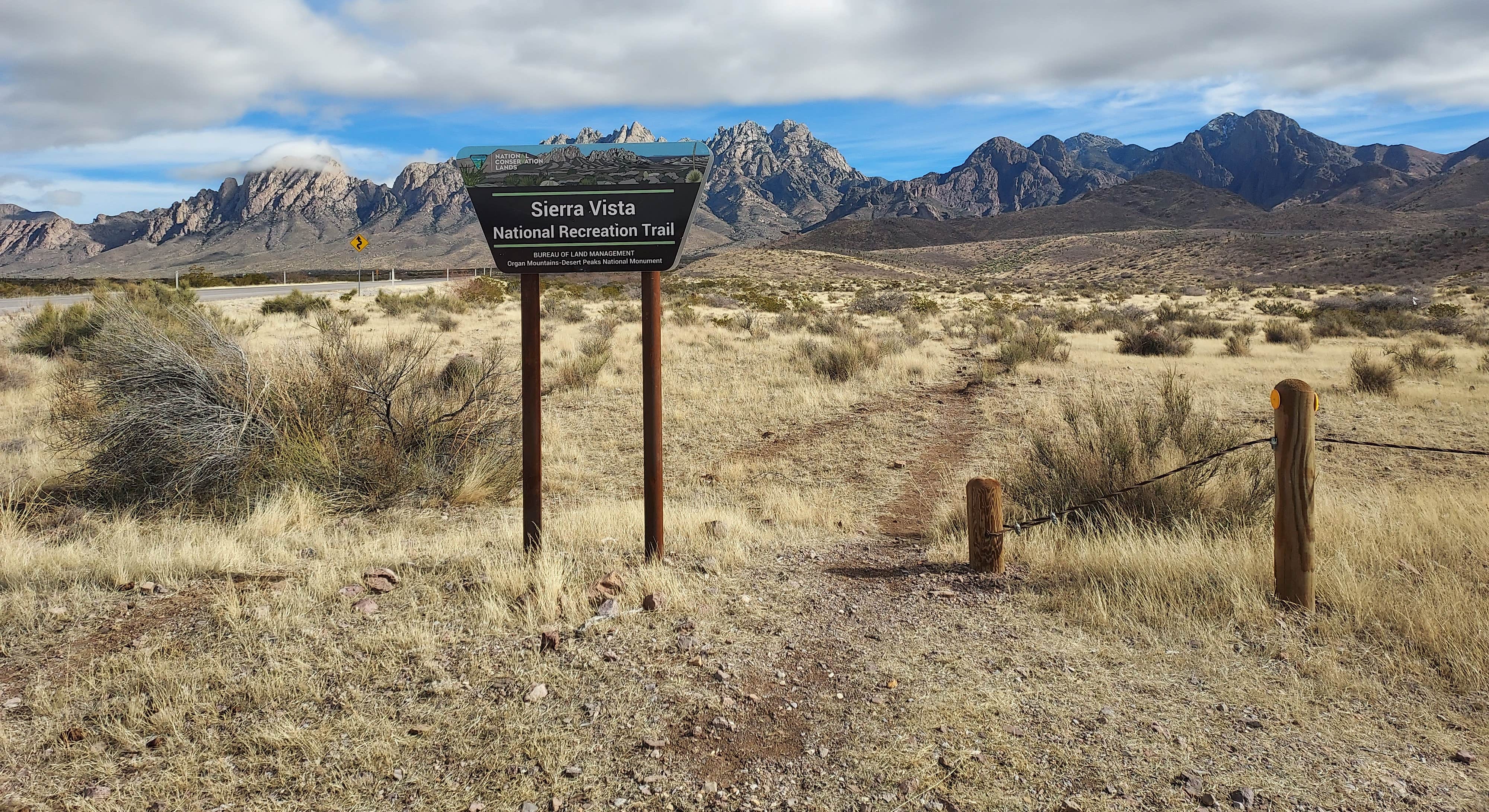 Photo by Noah E
Photo by Noah E
The Dyrt Community Insights for White Sands 
Ranger Recommendations
The Dyrt Rangers - experienced campers who document and review camping areas - offer these insider tips for White Sands:
Best Nearby Base Camp:
"Oliver Lee State Park is my go-to when visiting White Sands," notes one Dyrt Ranger. "The campground has just enough amenities to be comfortable after a sandy day, but still feels like desert camping. Sites 4-8 have the best mountain views, and the shower house is clean and hot. Plus, starting your morning with the Dog Canyon hike sets you up perfectly for an afternoon on the dunes."
Dispersed Camping Secrets:
Multiple Rangers recommend the BLM land near Dog Canyon for free camping. "Drive past the official Dog Canyon Campground and continue on the dirt road. There are dozens of pull-offs with established fire rings and incredible views. Just bring your own water and be prepared for no facilities. I've never had trouble finding a spot, even on holiday weekends."
Timing Your Visit:
"October and November are magic months at White Sands," advises a Ranger with dozens of desert camping trips. "The summer heat is gone, the spring winds haven't started, and you get these perfectly clear, calm days. Plus, the autumn light on the dunes during golden hour is unmatched for photography."
Top-Rated Sites from The Dyrt Community
| Category | Top Pick & Rating | Key Highlights |
|---|---|---|
| Best State Park | Oliver Lee Memorial SP 4.6/5 stars | Scenic canyon location, hot showers, hiking trails, dark skies, reasonable prices |
| Best RV Park | Alamogordo/White Sands KOA 4.5/5 stars | Full hookups, pool, free sled loans, friendly staff, convenient to town and park |
| Most Unique | White Sands Culinary Camp 4.7/5 stars | Gourmet meals, intimate setting, mountain views, personalized service |
| Best Free Camping | Dog Canyon BLM 4.4/5 stars | No fees, solitude, mountain/desert views, campfire friendly, easy access |
Community Insights and Recommendations
The Dyrt camping community has a wealth of firsthand knowledge about White Sands. Here are some top tips and insights shared by experienced campers:
| Tip | Insight |
|---|---|
| Avoid Midday Heat | "Plan your dune explorations for sunrise or sunset. The sand is much cooler, the light is amazing for photos, and you won't be battling the harsh midday sun. During the hottest part of the day, take a break -- we left the park and hit a local cafe from 12 to 4 PM, then returned for evening." |
| Anchor Your Tent | "In spring, the wind was so strong it could roll a loose tent like a tumbleweed. Use sand stakes for your tent and guy lines, and bury them deep. I ended up filling my extra stuff sacks with sand and using those as anchors -- worked like a charm to keep my tent grounded!" |
| Check Missile Closures | "Call the White Sands Missile Range hotline or check online the day before your visit. One morning we showed up and the road was closed for a test -- had to wait two hours. Now I always verify the military closure schedule so I can plan around it. The park's social media often posts upcoming closure times too." |
| Embrace the Full Moon | "If you have a chance to camp or walk on the dunes under a full moon, do it! The gypsum sand practically glows at night. We didn't even need headlamps -- you can see your moonshadow on the dunes. It's a surreal experience, like being on snow under bright moonlight." |
| Keep Sand Out of Gear | "Gypsum gets into everything. I set up a 'sand-free' zone by laying a tarp at my tent entrance -- shoes stayed on the tarp, not inside the tent. Also, bring a small brush; I was brushing off zippers and gear constantly. It really helped reduce the grit in my sleeping bag and camera." |
Responsible Camping Practices in White Sands 
Leave No Trace in White Sands
Camping near this fragile desert ecosystem requires thoughtful practices to preserve its unique beauty:
Pack It In, Pack It Out:
Remove everything you bring, including micro-trash like twist ties and bottle caps. The gypsum environment has minimal biological activity to break down waste. Even biodegradable items like orange peels can take years to decompose in the desert. Use designated trash receptacles at campgrounds or pack garbage securely until you reach proper disposal sites.
Minimize Campfire Impact:
Fires are prohibited on the dunes and within the park. At designated campgrounds and dispersed sites outside the park where fires are allowed, use established fire rings only. Keep fires small and burn only dead, downed wood (where available) or bring your own firewood. Scatter cold ashes after thoroughly extinguishing fires at dispersed sites. Never burn trash -- the desert environment makes cleanup of partially burned debris nearly impossible.
Respect Wildlife:
Observe all animals from a distance and never feed them. Human food can make wildlife dependent and aggressive. Store food properly even though bears aren't present -- smaller animals can still cause problems. If camping during spring and early summer, be aware of nesting birds and avoid disturbing vegetation where they might be breeding.
Preserve the Dunes:
When hiking off-trail in the dunefield, spread out to avoid creating paths. The gypsum sand is constantly shifting, but repeated foot traffic in the same area can damage the cryptobiotic soil crust that forms in some interdune areas. This living crust of bacteria, fungi, and algae is essential for stabilizing soil and providing nutrients for plants. One footstep can destroy decades of growth.
Water Conservation:
Desert water sources are precious and rare. Never contaminate springs or pools with soap, food waste, or human waste. When using water from the visitor center to fill jugs for dispersed camping, take only what you need. At campgrounds with running water, report any leaks immediately and use water sparingly.
White Sands NP Frequently Asked Questions 
Is there camping inside White Sands National Park? White Sands has no developed campgrounds -- only primitive backcountry sites requiring a 1+ mile hike through sand. These 10 sites normally operate on a first-come, first-served permit system (obtained at the entrance station the day of camping). However, all backcountry camping is closed indefinitely as of 2025 for rehabilitation. When open, permits cost $3 per adult per night and sites have no amenities -- you must pack in all water and gear.
Where can I camp near White Sands if the park camping is closed? Excellent camping options exist within 15-30 minutes of the park. Oliver Lee Memorial State Park (25 minutes away) offers developed sites with hookups and showers. The Alamogordo/White Sands KOA provides full RV hookups and a pool. Free dispersed camping is available on BLM land near Dog Canyon. For a unique experience, try glamping at White Sands Culinary Camp. Cabin rentals near Alamogordo and cabin options near Tularosa offer another comfortable alternative.
When is the best time to camp at White Sands? October through November and March through April offer ideal camping weather -- mild days (70-80 F) and cool nights (40-50 F) with generally calm conditions. Summer is extremely hot (95-105 F) with afternoon monsoons. Winter nights drop to 20-25 F requiring cold-weather gear. Spring brings notorious winds that can create sandstorm conditions. Full moon nights are magical for dune walks as the gypsum sand seems to glow.
Can RVs camp at White Sands? There are no RV camping facilities inside the park. However, several excellent RV campgrounds near White Sands National Park accommodate rigs of all sizes. Oliver Lee State Park has electric/water hookups for smaller RVs. The Alamogordo KOA and Boot Hill RV Resort offer full hookups with 50-amp service. New Mexico Volunteer Park also provides RV sites. Free boondocking is possible on BLM land, though large RVs may find access roads challenging.
Do I need a permit to camp at White Sands? For backcountry camping inside the park (when available), yes -- you need a permit obtained in person at the entrance station on your camping day. Permits are $3 per adult and first-come, first-served for the 10 available sites. For camping outside the park, requirements vary: state parks use standard reservation systems, private campgrounds require advance booking, and BLM dispersed camping requires no permits.
Is dispersed camping allowed near White Sands? Yes, free dispersed camping is available near White Sands on BLM and Forest Service lands. Popular areas include Dog Canyon (8 miles south of Alamogordo) and various spots in Lincoln National Forest. No permits or fees required, but you must be self-contained with no facilities provided. Follow Leave No Trace principles and observe the 14-day stay limit on public lands.
Are campfires allowed at White Sands? No campfires are permitted inside the park or on the dunes. At campgrounds outside the park, policies vary: Oliver Lee State Park allows fires in designated rings, private campgrounds typically permit fires in provided rings, and dispersed camping on BLM land allows campfires if you follow fire safety guidelines. Always check current fire restrictions, especially during dry periods.
What should I know about missile range closures? White Sands National Park is surrounded by an active missile testing range. Highway 70 and the park close without warning for tests, typically lasting 1-3 hours. Check the closure hotline (575-678-1178) or park website before visiting. Closures are more frequent on weekdays. The park usually posts anticipated closures on social media. If caught in a closure, you must wait -- there are no alternate routes.
Planning Resources
Essential White Sands Links
- The Dyrt's Campgrounds Near White Sands National Park - Browse reviews and details for all camping options
- The Dyrt Magazine - Additional White Sands NP Tips - Detailed camping tips and insights
- White Sands National Park Official Website - Current conditions, closures, hours, and maps
- White Sands Current Conditions & Closures - Real-time alerts and missile range closures
- New Mexico State Parks Reservations - Book Oliver Lee Memorial State Park
- NM Roads - Highway 70 Alerts - Check for missile test road closures
White Sands Reservation Timeline
| Time Period | Reservation Task | Platform/Details |
|---|---|---|
| 6 Months Before Trip | Book state park campgrounds | ReserveAmerica for Oliver Lee SP Popular sites fill early for spring/fall |
| 2-3 Months Before | Reserve private campgrounds | KOA, Boot Hill RV Resort websites Book cabins/glamping sites |
| 1 Month Before | Check park status and plan itinerary | Verify if backcountry camping has reopened Research trail conditions |
| 1 Week Before | Confirm reservations and check weather | Call campgrounds to confirm Monitor wind forecasts for spring trips |
| Day Before Arrival | Check missile range closures | Call 575-678-1178 or check park website Have backup plans for closure delays |
| Day of Camping (if in-park) | Arrive early for backcountry permits | Be at entrance by 7 AM for best chance First-come, first-served only |
White Sands Camping Checklist
Reservations and Permits:
- Campground confirmation (printed/digital)
- Park entrance pass ($25/vehicle or America the Beautiful Pass)
- Photo ID matching reservation
- Backcountry permit (when available, obtained day-of)
Desert Camping Gear:
- Sand stakes or anchors for tent
- Extra guy lines and bungee cords
- Tent footprint or ground tarp
- Warm sleeping bag (desert nights are cold)
- Insulated sleeping pad
- Shade structure or umbrella
Sun Protection:
- High-SPF sunscreen and lip balm
- Wide-brimmed hat
- UV-blocking sunglasses
- Long-sleeve sun shirt
- Bandana or buff for sand protection
- Goggles for windy conditions
Water and Food:
- 1+ gallon water per person per day
- Extra water for cooking/cleaning
- Electrolyte drinks or tablets
- Cooler with block ice
- Food in hard containers (animal-proof)
- Trash bags for pack-out
Navigation and Safety:
- GPS device or compass
- Topo map of area
- Headlamp plus backup
- Red light for stargazing
- First aid kit with tweezers
- Eye drops for sand
- Whistle
Desert-Specific Items:
- Small brush for sand removal
- Zip-lock bags for electronics
- Folding shovel
- Camp chair (sand gets hot)
- Ground tarp for sand-free zone
- Extra stakes and weights
By planning carefully and respecting the desert environment, your White Sands camping experience can be truly unforgettable. Whether sledding down moonlit dunes, watching sunrise paint the sand pink and gold, or stargazing from your campsite in the surrounding desert, White Sands offers a camping adventure found nowhere else on Earth. Happy camping at White Sands National Park -- may your days be bright and your nights filled with stars on the dunes!

